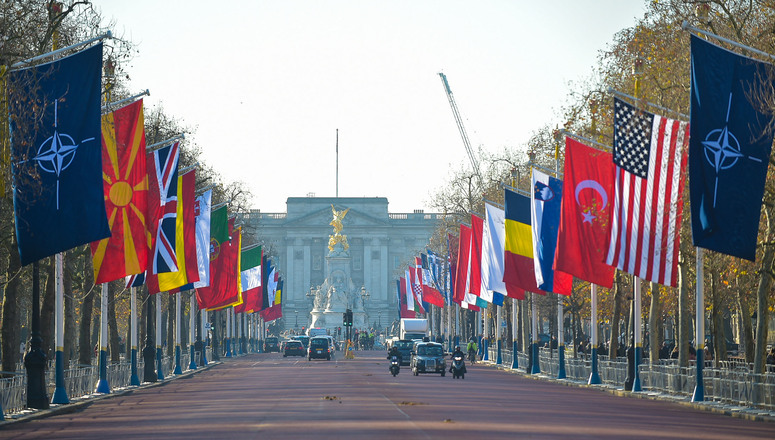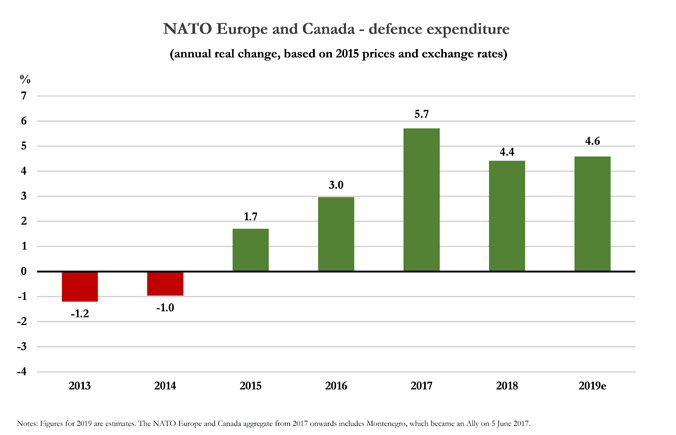On December 3rd, the 2019 NATO Summit began in London, having leaders from all 29 member states in attendance.
The opening event, starting at 9:30 AM local time on December 3rd is “Meeting with the President of the United States,” since the US is the main driving force and essentially the policy-maker of the organization.
US President Donald Trump will give a press conference, together with NATO Secretary General Jens Stoltenberg.
https://youtu.be/kcNhREvOD2w
The full list of NATO members is: Albania, Belgium, Bulgaria, Canada, Croatia, Czech Republic, Denmark, Estonia, France, Germany, Greece, Hungary, Iceland, Italy, Latvia, Lithuania, Luxembourg, Montenegro, Netherlands, Norway, Poland, Portugal, Romania, Slovakia, Slovenia, Spain, Turkey, the United Kingdom and the United States.
The day will continue with Jens Stoltenberg addressing the “NATO Engages: Innovating the Alliance” conference, after which Deputy Secretary General Rose Gottemoeller will also address the conference.
Finally, to finish off the first day – Her Majesty Queen Elizabeth II will host the leaders at Buckingham Palace.
On December 4th, the most notable event would be the NATO meeting at the highest level with all heads of State and Government.
The most significant topic on the agenda is most likely prompted by French President Emmanuel Macron’s “brain death comment” – “What we are currently experiencing is the brain death of NATO,” he said in an interview with the Economist. The US is paying the most for NATO, and it expects to unilaterally set out policy, no questions asked.
“You have no coordination whatsoever of strategic decision-making between the United States and its NATO allies. None,” Macron told the Economist ahead of the summit. “You have an uncoordinated aggressive action by another NATO ally, Turkey, in an area where our interests are at stake.”
At the last NATO summit in July 2018, disagreements over defense spending dominated the discussions. President Trump criticized Germany for not spending enough, and even reportedly threatened to pull out of the alliance if countries failed to meet NATO’s target to spend 2% of their GDP on defense.
It is likely that similar discussions will play a significant role in this year’s summit, as well.
The total defense expenditure by NATO in 2019 stood at $1 trillion 39 billion 628 million. Out of that sum, the US is responsible for $730 billion 149 million. That leaves the other 28 member states paying a total of $309 billion 479 million.
The following graph presents how much each respective country spends on defense, and it essentially does paint the picture of what NATO essentially is.
The US is responsible approximately 70% of all spending on defense, and it expects for the other 28 member states to willingly trust its unilateral decision-making and follow suit, no questions asked, which Macron criticized.
This has been the fifth consecutive year of rising defense investment, with European Allies and Canada due to spend $130 billion extra by the end of 2020, with that figure rising to $400 billion by the end of 2024.
That is rather unlikely to happen, as Canada and the countries of Europe are showing no specific interest in rapidly ramping up defense spending, especially if it still means that the US would be in total control.
NATO, and specifically the Baltic States and Poland are quite vocal in their claims of “Russian aggression” and the need to spend further and further on defense.
Russia is sanctioned, while the other countries on “NATO’s eastern front” are Ukraine and Belarus. Kiev is friendly to the organization, while Belarus has a “reasonable neutral course” to its policy. The constant hysteria of the “Russian threat” is evidence of the confidence, or lack thereof, the Baltic states have in the alliance, and have started to realize that it can’t specifically protect them from any threat.
Similarly, as Macron questioned whether NATO’s Article Five is even effective. Article Five sets out that if one NATO member state is attacked by an adversary, then it constitutes an attack on all member states and it warrants a collective response. With the US footing most of the bill and attempting to steer NATO in any direction it chooses, that may not happen.
Leaders are also due to have a strategic discussion on Russia, the future of arms control, as well as the rise of China.
To deter a possible and, mostly made up, “Russian threat” since 2018, NATO members have been working on the “NATO Readiness Initiative” which seems 30 battalions, 30 air squadrons and 30 combat ships ready within 30 days in the case of a possible escalation.
There are to be announcements made on December 4th regarding the readiness of these forces.
NATO Secretary General Jens Stoltenberg, in his November 29th brief ahead of the summit, accused Russia of bringing forth the end of the INF Treaty, which is a dubious statement at best. He didn’t mention the Aegis Ashore program, which could easily launch Tomahawk missiles towards Russia. Or that the US was also repeatedly accused of breaching the treaty.
“We have agreed that our response to Russia’s breach of the INF Treaty will be defensive, measured and coordinated.”
He did admit that there was no immediate threat from Russia, but NATO saw it as a “strategic challenge.”
“We don’t see any imminent military threat of Russia against any NATO country, but what we see is a strategic challenge. And we see a Russia which is investing heavily in new, modern capabilities, including nuclear forces, and a Russia which is violating a cornerstone arms control agreement in Europe, the INF Treaty, deploying missiles capable of reaching European cities within minutes, and missiles which are nuclear capable.
And we see a Russia, which has been responsible for aggressive actions against neighbours: Georgia, Ukraine, but also have forces in Moldova without the consent of the government in that country.”
And, even though there was no aggressive action by Russia, it was even more important to continue the deterrence and defensive spending, so that it continues to remain as such. Despite the obvious preparations for an open war, with all the aggressive posturing of NATO forces.
A most recent example is the announcement by the Polish Prime Minister that the US contingent in Poland would be increased tenfold, from approximately 4,500 soldiers, to presumably 45,000.
He reminded that the Defender 2020 exercise will take place, with around 20,000 US troops deployed in Europe to exercise on how to defend Europe. This, in addition to approximately 17,000 US and European troops that are already around the continent. A “defensive” exercise that sees the deployment of 20,000 troops from overseas.
Thus, there’s quite little that the Baltic states need protection from, but NATO maintains that the lack of an effective threat is proof that deterrence must continue, otherwise a threat might appear.
MORE ON THE TOPIC:










Poland disappeared from the map in 1815 after the Napoleonic war and resurfaced somewhat later. for a more peaceful existence in the northern part of Europe, it would be beneficial if the eastern part of the baltic sea south of finland was incorporated into some other and more reliable countries – poland into germany and the 3 baltic mini-states with no obvious purpose could be assumed by finland and russia in equal parts.
that would save the rest of europe some severe headaches.
Turkish peace corridor operation was actually started in coordination with US & Russia.
I guess Macron whining, coz he had a small economic stake there (La Farge cement factory).
NATO will be indeed brain-dead if some allies considers some communist terrorist as a “general”.
Why US lawmakers roll out the red carpet for the top commander of a terrorist group, who is the subject of an Interpol Red Notice? Guess why? Kurdish Kommunist party (PKK/YPG) as an independent state will be a buffer against the return of another terror group at the opposite site of political spectrum; ultra right-wing ISIS/Daesh.
Here is an article that looks at a recent accidental public release of the locations of American nuclear weapons in Europe:
https://viableopposition.blogspot.com/2019/07/american-nuclear-weapons-in-europe.html
Given that, during the Second World War, Russia lost approximately 9.75 million military personnel and 13.2 million civilians compared to the United States losses of 416,800 military personnel and 1700 civilians, is it any wonder that the Russians fear the presence of American nuclear weapons in Europe?